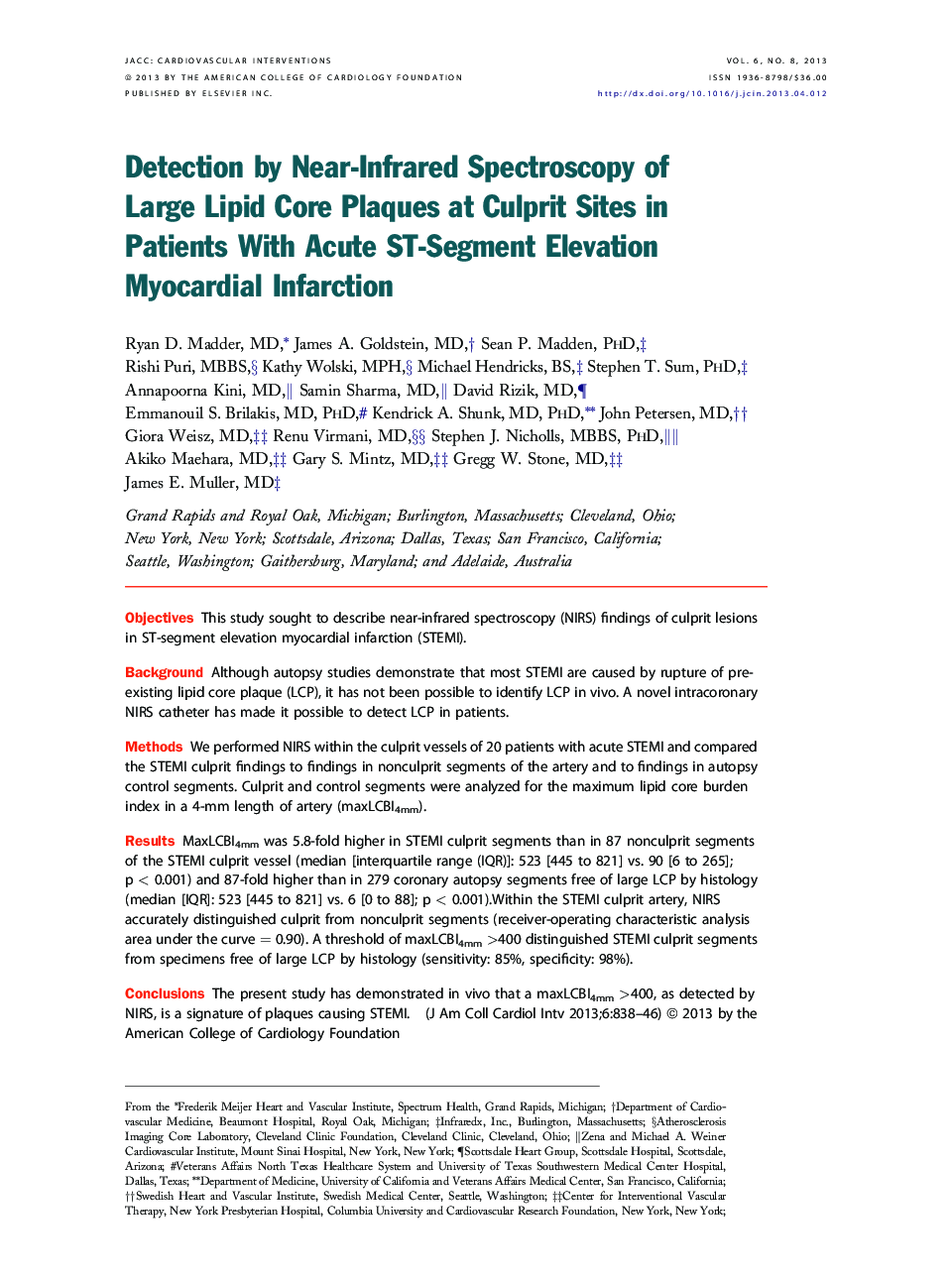| Article ID | Journal | Published Year | Pages | File Type |
|---|---|---|---|---|
| 2940541 | JACC: Cardiovascular Interventions | 2013 | 9 Pages |
ObjectivesThis study sought to describe near-infrared spectroscopy (NIRS) findings of culprit lesions in ST-segment elevation myocardial infarction (STEMI).BackgroundAlthough autopsy studies demonstrate that most STEMI are caused by rupture of pre-existing lipid core plaque (LCP), it has not been possible to identify LCP in vivo. A novel intracoronary NIRS catheter has made it possible to detect LCP in patients.MethodsWe performed NIRS within the culprit vessels of 20 patients with acute STEMI and compared the STEMI culprit findings to findings in nonculprit segments of the artery and to findings in autopsy control segments. Culprit and control segments were analyzed for the maximum lipid core burden index in a 4-mm length of artery (maxLCBI4mm).ResultsMaxLCBI4mm was 5.8-fold higher in STEMI culprit segments than in 87 nonculprit segments of the STEMI culprit vessel (median [interquartile range (IQR)]: 523 [445 to 821] vs. 90 [6 to 265]; p < 0.001) and 87-fold higher than in 279 coronary autopsy segments free of large LCP by histology (median [IQR]: 523 [445 to 821] vs. 6 [0 to 88]; p < 0.001).Within the STEMI culprit artery, NIRS accurately distinguished culprit from nonculprit segments (receiver-operating characteristic analysis area under the curve = 0.90). A threshold of maxLCBI4mm >400 distinguished STEMI culprit segments from specimens free of large LCP by histology (sensitivity: 85%, specificity: 98%).ConclusionsThe present study has demonstrated in vivo that a maxLCBI4mm >400, as detected by NIRS, is a signature of plaques causing STEMI.
